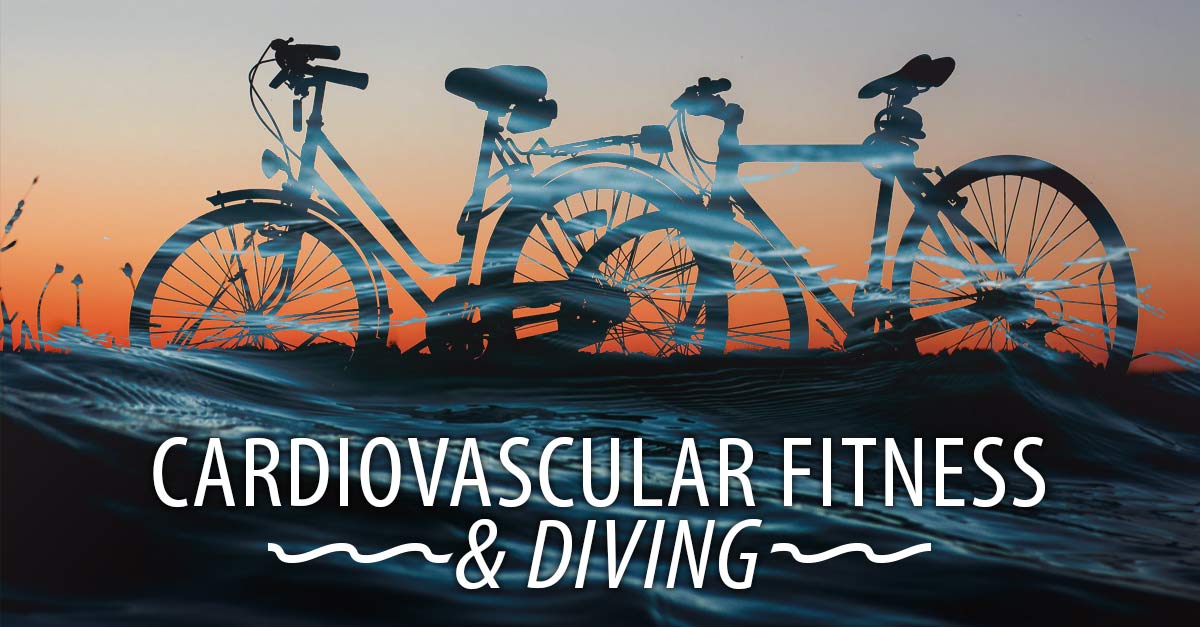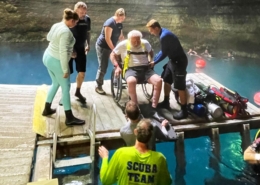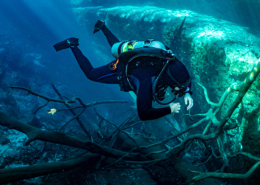Cardiovascular Fitness & Diving
By The Scuba Fitness Coach – Kristen Fassolas
What cardio should I do to improve my fitness for diving?
This is a question I get asked often. Remember, your fitness level can affect your susceptibility to DCS and other diving-related injuries. A good level of fitness can also help you be more efficient with your gas consumption and increase your overall enjoyment before, during and at the end of a dive.
Cardiovascular fitness (cardio for short) is the efficiency of the heart’s ability to pump blood and oxygen around the body. Improving your cardiovascular fitness brings lots of benefits.
- It will give you a better quality of life.
- t can allow you to exercise longer without being as tired.
- It may reduce the risk of heart disease and stroke.
- It can lower blood pressure, body fat and the risk of Type 2 diabetes and osteoporosis.
The two main types of cardio which we hear or read about are LISS (Low-Intensity Sustained State) and HIIT (High-Intensity Interval Training). Cardiovascular exercise is any exercise that increases your heart rate. All cardio works the heart and circulatory system but LISS and HIIT work different energy systems.
So what’s the actual difference and which should you concentrate on? Let’s dive into this in greater detail.
LISS workouts use your aerobic system
LISS is an aerobic form of exercise as it primarily uses oxygen for energy. It is a steady cardiovascular form of exercise where you keep your intensity low and your effort consistent. LISS involves working at around 60 to 70 percent of your HR max (maximum heart rate) for 20 minutes or more. Examples include:
- Going for a fast walk or a slow jog
- Hill walks or walking at an incline on a treadmill
- Steady cycling or rowing
- Going at a steady pace on a cross trainer
With LISS, you will need to frequently adapt your goals or effort. This is because your body quickly adapts to become more aerobically efficient. As a consequence, you must mix up distances and speeds to continually improve.
What are the benefits of LISS?
- LISS is great for a stronger heart, better blood flow, overall cardiovascular health and increased energy.
- LISS requires much less effort than HIIT, is much less stressful on the body. This means you can complete LISS sessions more frequently than HIIT sessions.
- LISS is good for people with injuries, novice exercisers or those with poor body composition. You do burn fewer calories than HIIT. Therefore, it takes more time.
HIIT workouts use your anaerobic system
HIIT is an anaerobic form of exercise. Your body primarily uses stored glycogen in the muscles rather than oxygen. It involves intervals consisting of periods of intense exercise followed by periods of rest/recovery.
Many people do HIIT incorrectly. They think it is about working at high intensities followed by low. This isn’t accurate. HIIT is working at near maximum, followed by a rest/recovery period. If you don’t need the rest, i.e. you could carry on working at a lower intensity then you didn’t work near your 100 percent max during the high-intensity burst.
Your goal is to push your heart rate as high as you can safely take it. This is generally about 80 to 95 percent of your maximum heart rate (HR max). Examples of HIIT include:
- Circuit training
- Interval forms of running, cycling and swimming
For example, you could do sprint intervals where you sprint for 20- 30 seconds followed by a rest/recovery period of one minute. You could then repeat that for 15 to 20 minutes before you cool down.
What are the benefits of HIIT?
- Due to the nature of HIIT, you can have shorter workouts. This is perfect for those who have busy lives. You can burn more calories in a shorter time than other exercise formats.
- HIIT training is a great way to improve your strength and overall physical performance. It helps to improve your aerobic capacity.
- These workouts push the body’s anaerobic threshold or capacity to continue high-intensity work.
- With high-intensity workouts, the body experiences an ‘’afterburn’’ effect post-workout (EPOC – excess post-exercise oxygen consumption). This is where it takes several hours to return back to a state of homeostasis (the body’s ‘energy in/energy out’ balance). This means you will continue to burn more calories even after the workout has ended.
- HIIT can help reduce your resting heart rate and blood pressure. It can also positively affect your blood sugar and insulin resistance which are key to help lower your risk of Type 2 diabetes.
- HIIT can be super challenging, but also fun.
Be aware that, if you have certain health conditions, working out near your maximum heart rate can be dangerous. Always consult with your doctor first if you are unsure.
If you are a novice exerciser, HIIT can increase the risk of injury due to its intensity. If you are just starting an exercise program, look to sustain at least 20 to 30 minutes of LISS before you introduce higher intensity exercise. It can be exhausting and stressful on the body, so it does take time to recover between sessions.
So what’s the answer?
Both! As you can see, both types of cardio provide different benefits and results. Having a balance of both types of cardio is important for diving. You want to be fit for different scenarios and events. Whether you are an absolute beginner new to exercise or a long term exerciser, you can benefit from incorporating both HIIT and LISS into your training plan to help improve your cardio fitness for diving.
You’ll never regret a workout. Getting those endorphins pumping is always a great thing. So whichever cardio session you choose just ensure you enjoy it. You will reap the benefits in all aspects of your life and your time in the water.










Leave a Reply
Want to join the discussion?Feel free to contribute!